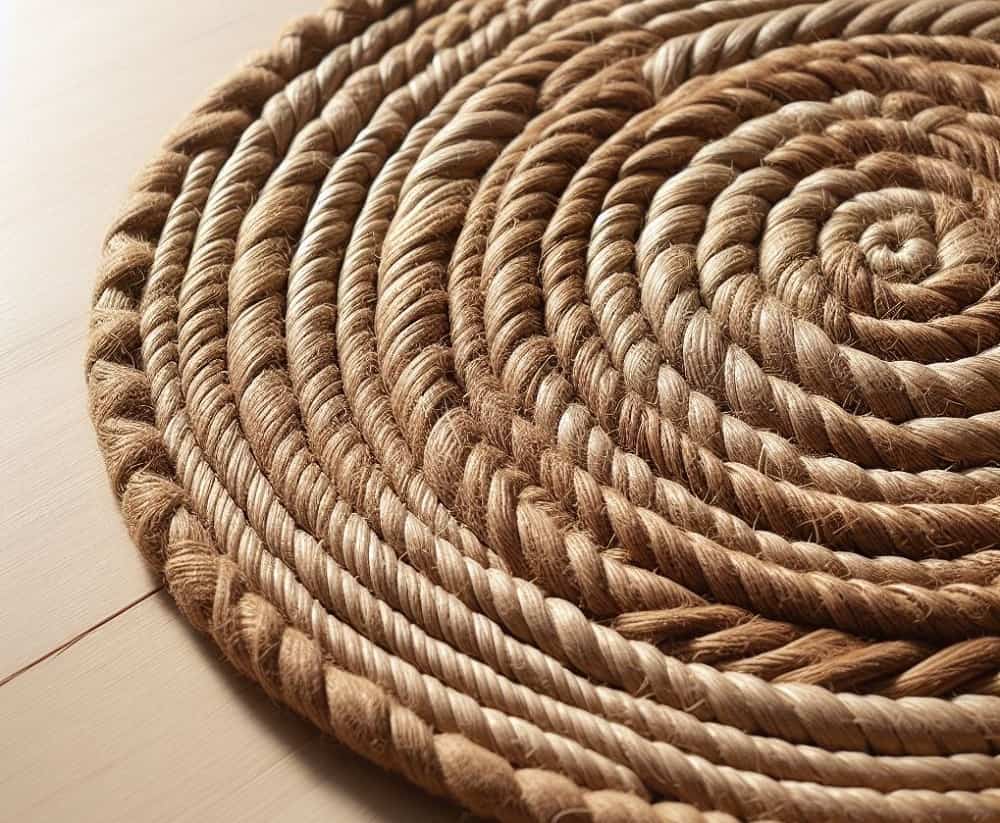
Looking for Coir vs Jute guide?
Coir
Coir is a by-product that is extracted from the harvesting of coconut-producing countries, especially Sri Lanka & India. When the coconut is harvested, the inner part of the husk is used to extract fibers. The fibers are both white and brown depending on the age of the coconut whether it is ripped or immature. The fibers are then used to produce coir when they are gone through a process. The fibers are then soaked in water and dried for as long as a year. The longer the fibers are left to dry the better quality of coir is produced.
Jute
What many people don’t know is Jute is a plant. Commonly Jute is associated with a textile fiber. Jute has many different species, but the textile Jute on made from Corchorus olitorius also known as white jute. After cotton, Jute is the second most used plant-based fiber commonly used. It is one of the primary sources of fibers in India and its neighboring countries. Jute plants can grow up to 10 feet high, and it’s harvested in a long single string. Jute produces the natural longest fibers in the world which is grown in similar conditions to rice.
Texture
Coir
During the manufacturing process of coir, it can go through different variants which can change its shape, size, and weight and how it is finished as a different end product. Commonly coco coir is processed as coco pith, coco fiber, and coco chips. Each coir produced has different properties and has its application. Coco pith is like a finely grounded coconut texture and is commonly used as a soil medium. Coco fibers are used as liners for hangings and decorations. Coco chips are sort of in between pith and fiber
Jute
Jute texture is soft & long lustrous fibers that are spun in strong and thick yarns. Jute as compared to burlap is smoother in texture with a polished appearance. Mostly jute found is in light brown color, but off-white variety is also available. The fibers can be spun to strong threads and coarse. Due to its rough texture it is unpopular among apparel usage unless it has gone through an extensive process. Characteristics like durability and roughness makes it best for industrial use. Jute has capability of absorbing water readily and can also dried out quickly. Its resistant to wear and tare and stains.
Durability
Coir
Coco coir is known for its strength and durability and is inexpensive to produce. Coir has high tensile strength and is flexible. Due to coir high durability coir is being used in a wide range of applications like agriculture, construction and textile. Coir is also 100% eco-friendly and is a sustainable alternate. It can be replenished with in months. Coco coir also reduces the environmental impact as coir grow is a by-product which was considered as a waste some time ago.
Jute
Jute firstly is considered as a 100% sustainable and environmentally friendly material. It is grown without any fertilizers or pesticides. The fabric made from Jute is durable strong and resistant to any sort of tearing. Its abrasion and stretching characteristics make it for products that should be made strong and durable. Jute is not commonly used in outdoor application.
Applications
Coir
Over the years, Coir has gained popularity all around the world as a growing medium in the agriculture and horticulture. Users realized how the use of coir has provide both quality in yield and efficiency. Not only with gardening Coir has a wide range of industrial applications. Other use of coir are as follows
- Textiles – production of mats, brushes, door mates and rugs.
- Construction- manufacturing of ropes twines, fishing nets & buoys, other sound proofing material.
- Furniture- cushioning material, car seats and furniture that offers good elasticity and shock absorption.
- Personal Care product- Making of bath brushes and loofahs
- – geotextile & erosion.
Jute
Jute is commonly used to make cheap materials like sacks, and bags, and has other various industrial purposes. Initially due to the rough texture, Jute was not preferred for apparel. But recent advancement in technology has made advancement in jute processing for some type of garments. Jute garments and jackets are gaining popularity. Jute has been associated as a synonym with Burlap from a very long time ago. Burlap sacks are commonly used for transportation of goods like vegetables, fruits, also used as insulative material. Jute also has its agricultural applications as its used for erosion control and in rice fields
Cost
Coir
Coco coir is a very cost-effective alternate to other similar mediums. It is relatively not expensive and should be bought from a reliable supplier. Coir is also available in different shapes and sizes, and is compressed for easy transportation. Due to its compressed size, it becomes cost effective when it is transported. Coir can be available in bricks, disc, chips and other mediums. Coir is mostly manufactured and exported from Coconut producing countries like Sri Lanka, India and others.
Jute
Jute is considered among one of the least in-expensive textiles. Majority Jute is produced in India, Pakistan and Bangladesh. Price of jute is significantly similar to Cotton. Due to its cheap price, it is also considered in manufacturing of bags and sacks.
Now you know difference between Coir vs Jute, Contact Earth Scape a leading coco peat manufacturers in Sri Lanka to order coir.
